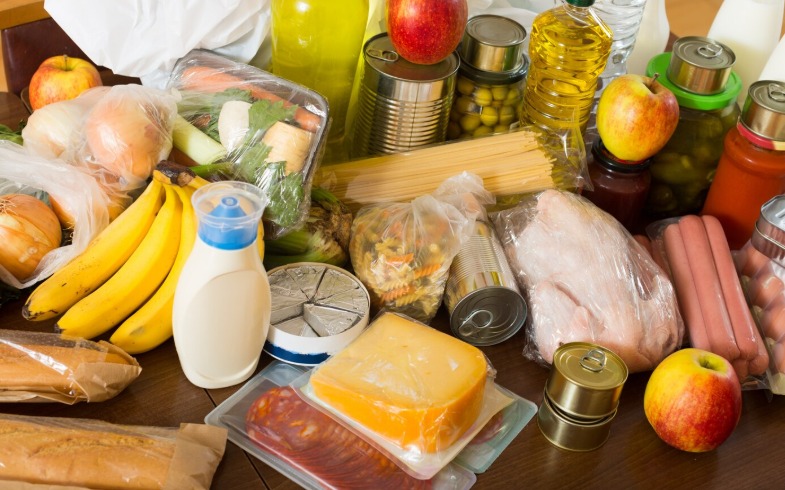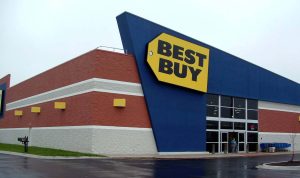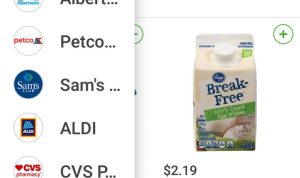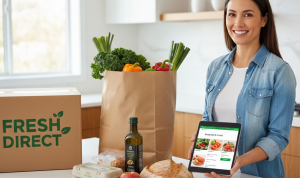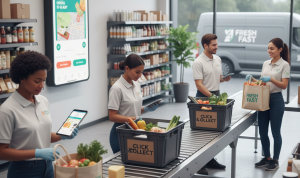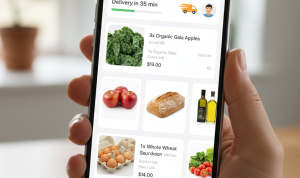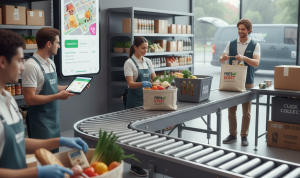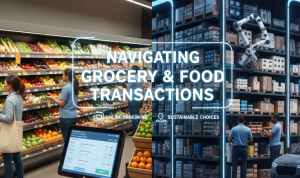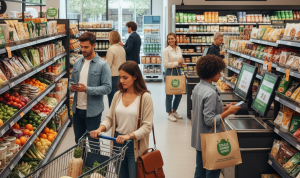The way we buy food has changed dramatically. Once confined to physical aisles and checkout lines, the groceries & food industry has undergone a seismic shift, with digital commerce now playing a central role. From online meal kits and fresh produce delivery to smart pantries and personalized subscriptions, understanding the modern sales and transaction landscape is crucial for businesses and consumers alike. This guide explores the key trends, channels, and strategies that are shaping how we fill our fridges and pantries.
The Modern Food Consumer: Convenience, Health, and Conscience
Today’s food shopper is more discerning than ever before. Their purchasing decisions are driven by a complex mix of factors:
- Convenience: With busy lifestyles, consumers are increasingly prioritizing convenience. This includes quick-delivery services, easy-to-use apps, and subscription models that eliminate the need for regular shopping trips.
- Health & Wellness: There is a growing demand for organic, gluten-free, plant-based, and locally sourced products. Consumers read labels, research ingredients, and seek out brands that align with their dietary preferences and health goals.
- Sustainability & Ethics: Shoppers are becoming more conscious of the environmental and social impact of their food. They are drawn to brands that prioritize sustainable farming, ethical labor practices, and reduced packaging.
- Personalization: From meal kits tailored to specific diets to personalized recommendations based on past purchases, consumers want a shopping experience that feels customized to their needs.
- Brand Trust & Transparency: In a market with countless options, transparency is key. Consumers want to know where their food comes from, how it was produced, and the values of the brand behind it.
Key Sales Channels and Transaction Models
The groceries and food sector utilizes a diverse range of channels to get products to consumers:
1. E-commerce & Online Supermarkets
The most significant shift has been the move to online grocery shopping.
- Click-and-Collect: Customers order online and pick up their groceries at the store. This combines the convenience of online shopping with the immediacy of physical pickup.
- Home Delivery: Groceries are ordered online and delivered to the customer’s doorstep. This is powered by large supermarket chains (e.g., Walmart, Tesco) and specialized delivery services (e.g., Instacart, Shipt).
- Subscription Services: Meal kit services (e.g., HelloFresh, Blue Apron) and snack boxes (e.g., Graze) offer recurring deliveries, providing convenience and a curated experience.
2. Physical Retailers
Traditional supermarkets and smaller specialty stores still hold a vital place in the market.
- Supermarkets: They offer a vast selection, competitive pricing, and a one-stop-shop experience. Many have integrated their physical presence with their online platforms.
- Specialty Stores: Bakeries, butchers, farmers’ markets, and health food stores cater to niche needs, providing fresh, high-quality, and often local products.
3. Direct-to-Consumer (D2C)
Many food producers are now bypassing traditional retail and selling directly to consumers. This allows them to:
- Build Direct Relationships: Brands can gather valuable customer data and build loyal communities.
- Control Brand Story: They can communicate their values and production methods directly to the consumer.
- Offer Exclusive Products: D2C channels can feature unique products or limited editions not available elsewhere.
The Transaction Lifecycle: From Digital Cart to Dinner Table
A typical food transaction journey is a multi-stage process that prioritizes efficiency and trust:
1. Product Discovery and Research
The journey begins with a need to cook a meal, restock the pantry, or try a new product. Consumers may search for recipes, read product reviews, or get recommendations from food blogs or social media. This stage is heavily influenced by digital content.
2. Basket Building and Ordering
Whether online or in-store, this is where the customer selects their products. For online shopping, this involves adding items to a virtual cart. Smart features like “buy again” lists and AI-powered recommendations help streamline this process. The transaction must be seamless and secure.
3. Fulfillment and Delivery/Pickup
This is a critical stage, especially for perishable goods.
- For online orders: Logistics are key. Groceries must be picked, packed, and delivered efficiently to maintain freshness and quality.
- For in-store shopping: The transaction is a quick process at the checkout counter, often with the option of self-checkout for added convenience.
4. Post Purchase Engagement
The customer journey doesn’t end after the sale.
- Customer Service: Handling inquiries about delivery, product quality, or returns.
- Reviews and Feedback: Encouraging customers to leave reviews helps build a community and provides valuable data for the business.
- Loyalty Programs: Rewarding repeat customers with discounts or exclusive offers to encourage long-term relationships.
- Content: Providing recipes and meal-planning tips adds value and keeps the brand top-of-mind.
Optimizing for Search Engines (SEO) in Food & Grocery Sales
For businesses in the food and grocery sector, a strong Search Engine Optimization (SEO) strategy is essential for attracting and retaining customers.
- Keyword Research: Target keywords that consumers use when searching for food, such as “organic produce delivery,” “best meal kit for families,” “healthy snack brands,” or specific product names. Don’t forget location-based keywords like “grocery delivery near me.”
- High-Quality Product Content: Each product page should have a unique, detailed, and keyword-rich description. Include information on ingredients, nutritional facts, sourcing, and preparation instructions.
- Recipe and Content Marketing: Create a blog with recipes, cooking tutorials, and articles on health and nutrition. This answers user questions and drives organic traffic from informational searches.
- Local SEO: For physical stores or local delivery services, optimize your Google My Business profile with accurate information, hours, and local reviews. This is crucial for “near me” searches.
- User-Generated Content: Encourage customers to post reviews and photos of their meals. This provides social proof and fresh content that search engines love. Implement schema markup for star ratings on product pages.
- Technical SEO: Ensure your website is fast, mobile-friendly, secure (HTTPS), and has a clear site structure. Optimize product images for fast loading times.
- Video Content: Create short, engaging videos for social media and your website showing how to prepare meals or showcasing your products.
The Future of Food Transactions: Smart, Sustainable, and Seamless
The industry is on the cusp of further innovation. We can expect to see:
- AI-Powered Personalization: Even smarter recommendations and automated re-ordering based on consumption habits.
- Supply Chain Transparency: Consumers will be able to trace their food from farm to fork using blockchain technology.
- Sustainable Logistics: A focus on reducing food waste and carbon emissions from delivery.
- Subscription & Meal Planning Integration: More services will blend meal planning, recipe suggestions, and grocery delivery into one seamless platform.
By adapting to these trends and focusing on convenience, transparency, and personalization, businesses in the groceries and food industry can continue to thrive and build lasting relationships with their customers.

